One of the most effective ways to improve client conversion rates is to focus on streamlining and improving the firm’s client intake process. The intake process is often the first meaningful interaction potential clients have with your law firm, so getting it right is essential.
A clear, organized, and efficient law firm intake process helps build trust, improves client satisfaction, and directly impacts your bottom line. However, many firms struggle with intake because their processes are outdated, slow, or confusing.
Curious to learn more about how you can design a truly efficient law firm intake process? Keep reading for clarity on some of the basics.
Important Summary Points:
- Improving your intake process increases conversions: A smooth, easy-to-understand intake experience helps potential clients choose your firm instead of a competitor.
- Technology saves time and prevents mistakes: Using digital tools can streamline scheduling, documentation, and client communications, making your firm more efficient and professional.
- Good training helps your staff handle inquiries better: Properly trained staff ensure consistency, professionalism, and effective communication during initial client interactions.
- Measuring performance regularly helps you improve: Tracking key intake metrics like response times, conversions, and client feedback allows you to continuously refine and enhance your intake process.
- Customized intake processes attract more clients: Tailoring your intake procedures to different legal services or client needs makes clients feel valued and understood from the very beginning.
Why Your Firm’s Intake Process Matters
The intake process is the doorway through which new clients enter your firm. If potential clients have a positive initial experience, they’re far more likely to retain your services. But if the intake process is slow, confusing, or frustrating, potential clients often choose another law firm.
Efficient intake processes create a strong first impression. Clients usually form opinions about your firm’s professionalism and reliability based on their earliest interactions. A well-managed intake process shows clients that your firm is organized, trustworthy, and attentive to their needs, increasing the likelihood they’ll hire you. Additionally, a well-managed intake process can help establish a strong attorney-client relationship by clearly defining the scope of representation and responsibilities of both parties.
Conversely, ineffective intake processes lead to missed opportunities and decreased revenue. Therefore, prioritizing intake can have a substantial impact on your firm’s growth.
Common Legal Intake Process Challenges Law Firms Face
Many law firms inadvertently sabotage their intake process due to common mistakes. Recognizing these issues is the first step to improving intake efficiency.
One common issue is slow response times. Clients often choose a lawyer based on who responds first. If your firm takes hours or days to respond, you’re likely losing potential clients to faster competitors.
Another challenge is unclear or complicated communication. If your intake forms, emails, or phone conversations are overly complex or difficult to understand, potential clients can become frustrated and lose interest quickly. Well-designed client intake forms can help avoid unclear or complicated communication by gathering crucial case information efficiently and reflecting the firm’s professionalism.
Manual data entry errors are also common. Filling out paperwork by hand or repeatedly entering client data can lead to mistakes, lost information, and delays. This undermines client confidence and creates unnecessary confusion.
Lastly, poor or inconsistent follow-up is detrimental. Without clear follow-up procedures, potential clients might feel forgotten, prompting them to look elsewhere for legal help.
Stages of the Client Intake Process
A well-structured client intake process is essential for law firms aiming to maximize conversion rates and enhance client satisfaction. Understanding the key stages of this process helps ensure that potential clients have a positive experience from their first interaction with your firm. Here are the critical stages of the client intake process:
Initial Contact
The initial contact stage of the client intake process is the first point of interaction between the potential client and the law firm. This stage is crucial in setting the tone for the entire intake process and can significantly impact the client’s decision to proceed with the firm. During this stage, the law firm should aim to gather basic information about the client and their legal issue, such as their name, contact details, and a brief description of their case. This information can be collected through various channels, including phone calls, emails, or website forms.
Gathering Detailed Information
Once the initial contact has been made, the law firm should gather more detailed information about the client and their legal matter. This stage involves collecting relevant documents, conducting interviews, or using secure online forms to gather comprehensive information. The goal of this stage is to gain a deeper understanding of the client’s situation and assess the feasibility of their case. The law firm should also use this opportunity to educate the client about the legal process and the services they offer.
Conducting a Conflict Check
A conflict check is a critical stage in the client intake process that involves verifying whether the law firm has any conflicts of interest with the potential client or their case. This stage is essential in ensuring that the law firm can provide unbiased and effective representation. The conflict check should involve a thorough review of the client’s information, as well as a search of the firm’s database to identify any potential conflicts.
Using Technology to Improve Your Intake Process
Technology can significantly enhance your firm’s legal client intake process. Digital tools like automated intake forms, online scheduling apps, and integrated client management software save time and minimize errors.
For example, online scheduling tools allow potential clients to conveniently book appointments directly through your website. This reduces phone calls, minimizes delays, and ensures quicker consultations.
Integrating practice management software with your intake process can further enhance efficiency. This integration keeps all client information in one digital file, minimizing redundancy and errors, and improving the overall accuracy of legal intake and case management.
Automated intake forms simplify data collection. Potential clients can easily complete these forms from home, reducing the chance of mistakes or missed information. Because these forms integrate directly into your firm’s database, they also reduce manual data entry, freeing your staff for other tasks.
Automated reminders via email or text can remind potential clients of appointments or paperwork deadlines, reducing missed consultations and speeding up the intake process.
Improving Client Experience Through Intake
An effective legal intake process should prioritize the client experience. Clients often approach legal services feeling stressed or uncertain. Your intake process should reassure and guide them clearly and compassionately.
Make sure your communications during intake are friendly, concise, and easy to follow. Clearly explain what information you need, why you need it, and the next steps in the process. Clients appreciate straightforward explanations, especially when dealing with complex legal matters.
Offering multiple ways for clients to reach you—such as by phone, email, text, or online forms—lets them choose what’s most comfortable, making the intake process more client-friendly and accessible.
Training Your Staff for Better Intake Results
Even the best technology won’t fix an intake process if your staff isn’t well-trained. Staff members answering phone calls, emails, or handling consultations directly affect client decisions.
Training staff to handle the legal intake process efficiently is crucial. Regular training helps staff handle inquiries efficiently and professionally. Training should include clear instructions on responding quickly, accurately documenting client information, and providing friendly, helpful interactions. Staff members should also know how to answer common questions clearly and confidently.
Regularly reviewing real-world intake examples and providing feedback helps your staff continuously improve. Well-trained staff members not only convert more clients, but they also enhance your firm’s reputation by consistently offering professional, compassionate service.
Tracking and Improving Your Intake Process
To continuously improve your intake process, it’s important to measure performance regularly. Tracking key metrics like response times, consultation scheduling rates, and overall client conversion helps you identify strengths and weaknesses in your intake procedures.
A streamlined client intake process is essential for fostering effective attorney-client relationships, enhancing efficiency, and reducing administrative burdens for lawyers. It can boost client confidence and trust, while a chaotic process may lead to client frustrations and potential compliance issues.
If metrics indicate slow response times, you can prioritize training or technology improvements to address the issue. If many clients abandon intake forms halfway through, simplify or clarify the form to improve completion rates.
Regularly ask clients for feedback on your intake process. Their insights can highlight areas needing improvement and validate successful practices. Consistent evaluation and adjustments based on performance data ensure your intake process continually evolves and improves.
Tailoring Your Intake Process to Your Practice Areas
Prospective clients in different legal specialties require different intake approaches. Personal injury cases might demand rapid responses due to clients facing urgent medical needs, whereas estate planning inquiries often involve more detailed, careful consultations.
Customizing intake based on your practice areas greatly enhances effectiveness. Family law clients often appreciate compassionate, patient conversations, whereas corporate clients prefer efficiency and clarity.
By adapting intake processes to specific client needs and expectations, your firm demonstrates understanding and professionalism. Tailored approaches help clients feel uniquely supported, increasing the likelihood they choose your firm.
Implementing an Efficient Law Firm Intake Process
An efficient law firm intake process not only improves client satisfaction but also enhances the overall productivity of the firm. By leveraging modern technology and best practices, law firms can streamline their intake process, making it more effective and client-centric.
Use Electronic Signatures and Engagement Tools
Implementing electronic signatures and engagement tools can significantly streamline the client intake process, making it more efficient and convenient for both the law firm and the client. Electronic signatures can be used to execute engagement agreements, contracts, and other documents, reducing the need for physical paperwork and minimizing the risk of errors. Engagement tools, such as client portals and secure online forms, can also be used to collect client information, share documents, and communicate with clients. By leveraging these technologies, law firms can improve client satisfaction, reduce costs, and increase productivity.
By incorporating these stages and strategies into their client intake process, law firms can create a more efficient, effective, and client-centric experience that sets them apart from their competitors.
Avoiding Common Intake Mistakes
Several common mistakes undermine effective intake processes. Avoid complicated legal jargon during initial communications, as it can confuse or intimidate potential clients. Ensure intake paperwork is short and clear—asking too many unnecessary questions can deter prospects.
Another common mistake is neglecting client follow-up. Many firms lose potential clients simply because they fail to check back after initial contact. Consistent follow-ups demonstrate your firm’s attentiveness and commitment, significantly increasing conversions.
Additionally, relying exclusively on manual processes can hurt efficiency. Implementing even basic automation tools can greatly enhance your intake process and client experience.
Leveraging Intake as a Competitive Advantage
Your law firm’s intake process can become a powerful competitive advantage. By creating an efficient, client-centered intake experience, your firm stands out from competitors who neglect this critical aspect.
Promoting your streamlined intake process in marketing materials or on your website helps attract clients seeking convenience and responsiveness. Clients frequently choose firms based on ease of initial interaction, so highlighting your efficient intake methods differentiates your firm in a crowded market.
In short, a thoughtfully structured intake process sends a clear message: your firm cares deeply about client satisfaction, convenience, and trust. Such qualities attract more clients and encourage referrals, helping your practice thrive in the long run.
Contact Walker Advertising to Help Grow Your Firm’s Client Base
Whether you’re a solo or small firm lawyer or part of a larger firm planning to expand your client base, it’s important to invest in your marketing efforts to achieve your revenue and client growth goals. Here at Walker Advertising, we can help. We operate several well-known attorney networks, including Los Defensores and 1-800-THE-LAW2, which provide law firms with access to leads for various legal claims.
The leads we acquire through our various online marketing efforts — from social media marketing to targeted web ads — have been pre-qualified by our team to help you avoid irrelevant or non-actionable leads. By accessing these quality leads, you’ll be well-equipped to select the best ones to grow your firm’s business.
Contact Walker Advertising today to connect with a member of our team who can explain how our legal networks can help your firm grow in this ever-changing digital marketing landscape.
We look forward to assisting you.






